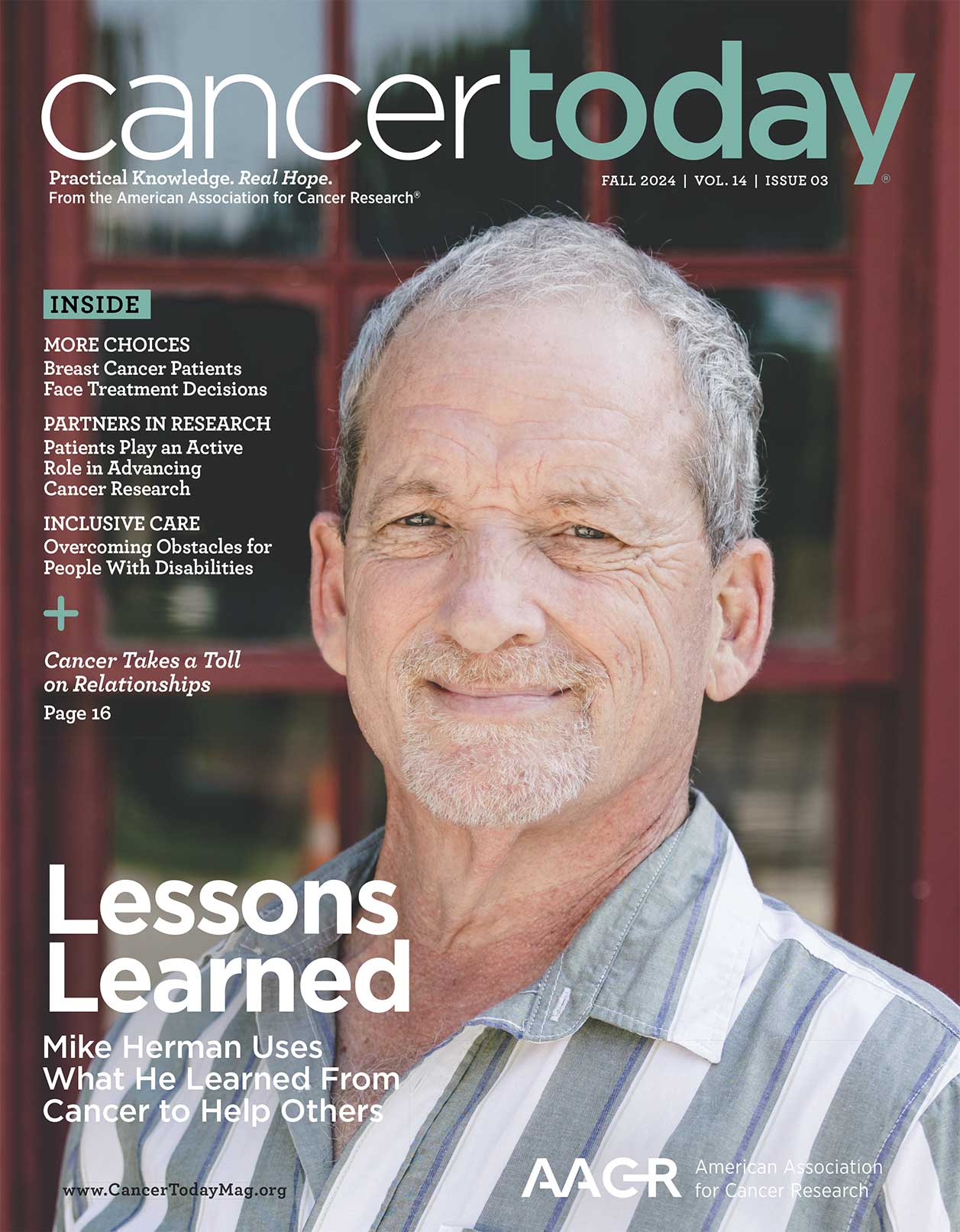IN HER BOOK Radical: The Science, Culture, and History of Breast Cancer in America, journalist and breast cancer survivor Kate Pickert described the movement away from anthracycline drugs, which have been a mainstay of chemotherapy regimens for breast cancer for years. In her research, Pickert learned there were still considerable differences of opinion—noting that some oncologists favored using cyclophosphamide and taxanes without anthracyclines due to side effects, such as a future risk of heart problems and leukemia.
Pickert summarized the anthracycline dilemma patients with breast cancer face: “Are you willing to risk a serious side effect for a slightly better chance your cancer will be cured? Or are you willing to risk a slight chance you will not be cured if it means you could avoid a serious side effect?”
A research review published April 15, 2023, in the Lancet found that the addition of an anthracycline is more effective at reducing breast cancer recurrence and death compared with taxane-based chemotherapy regimens without anthracyclines. As part of the analysis, researchers assessed data from 15 clinical trials involving more than 18,000 women who had a taxane regimen either with or without an anthracycline. They found that recurrence rates were 14% lower with taxane regimens that included an anthracycline compared with those that did not. There was one additional case of acute myelogenous leukemia per 700 women treated with anthracycline, which suggests the risk for developing leukemia is lower than expected. Rates of death, cardiovascular disease and other primary cancers were similar in the people who did not have a recurrence in both treatment groups—although patients were not followed over the long term.
The steepest reductions in recurrence rates were found in three trials where patients received an anthracycline (doxorubicin), a taxane (docetaxel) and cyclophosphamide at the same time. In patients who had the three-drug combination, the 10-year recurrence risk was 12.3%, compared with 21.0% in the group that received just a taxane and cyclophosphamide.
“The conclusion really is that TAC [the taxane Taxotere, the anthracycline Adriamycin, and cyclophosphamide, given at the same time] is the best regimen, but none of us really use TAC these days,” mainly because it’s so hard to tolerate, says senior co-author Sandra Swain, a breast medical oncologist at Georgetown University Medical Center in Washington, D.C. She adds that, when using an anthracycline, the typical practice for high-risk women is to give cycles of anthracycline and cyclophosphamide together, followed by a taxane.
“Even though the combination of anthracycline and taxane appears to be better, it really depends on the risk of recurrence,” Swain says. “If a patient has negative lymph nodes, they might not want to have an anthracycline because of the fairly low chance of cardiotoxicity and leukemia. It is really about the benefit-risk ratio.”
In many cases, targeted therapies are reducing the need for anthracycline chemotherapies. For example, anthracyclines are not recommended for patients with early-stage HER2-positive breast cancer because of the effectiveness of less toxic chemotherapy agents and targeted therapies such as Herceptin (trastuzumab), which blocks the HER2 protein that causes cancer cells to grow.
Another key finding of the study, Swain adds, was that a higher cumulative dose of anthracycline and taxane provides the greatest benefit to patients. While some oncologists are shortening treatments from six chemotherapy cycles to four, Swain says treatment length matters and suggests physicians who eliminate an anthracycline stick to the longer treatment plan.
Sara Hurvitz, a breast oncologist at Fred Hutchinson Cancer Center in Seattle, who was not involved with this study, has been studying anthracyclines since early in her career, when she treated a young, healthy and athletic patient who developed severe cardiomyopathy, a disease that affects the heart muscle, after her third treatment cycle with TAC. “This was just jarring as a physician,” Hurvitz says.
In many cases, such as when treating patients with hormone receptor-positive cancers, Hurvitz says she avoids using anthracyclines—particularly due to the availability of endocrine therapy and new treatments such as CDK4/6 inhibitors, which have less serious side effects. “If a patient has four or more positive lymph nodes involved, there is serious consideration given to using anthracycline,” she says. “But in the CDK4/6 era, we’re not sure how much they are adding. I think there will be studies in the future to question whether CDK4/6 inhibitors or antibody-drug conjugates could replace the anthracycline.” CDK4/6 inhibitors target specific proteins to slow or stop cancer cells’ growth, while antibody-drug conjugates bind to certain proteins on cancer cells and deliver powerful chemotherapy directly into them.
Treatment choices require weighing the risks and benefits for each patient, especially in light of the patient’s age, medical conditions and cardiac risk factors. Hurvitz advises patients who take an anthracycline as part of their chemotherapy to see a cardio-oncologist or cardiologist, both during and after treatment. She notes that some new treatments can provide benefits to patients without risks of heart problems down the road. “Anthracyclines may be appropriate for some patients, but I remain convinced that we lack evidence to conclude that anthracyclines will benefit all patients,” she says.
Cancer Today magazine is free to cancer patients, survivors and caregivers who live in the U.S. Subscribe here to receive four issues per year.





